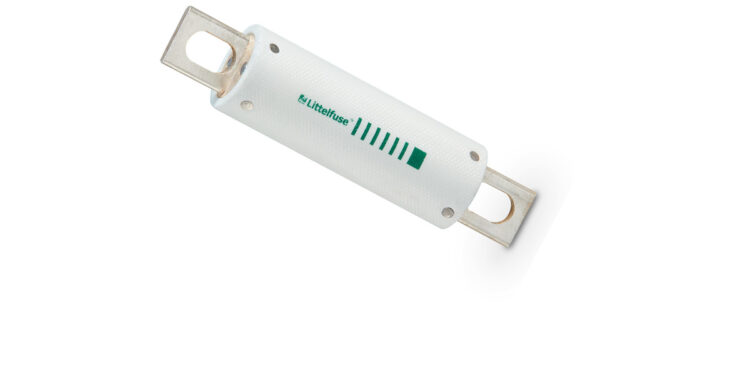Littelfuse EV1K series fuse first to provide 1000Vdc automotive grade protection for next-gen passenger cars and commercial EVs. Ideal for EV power system applications requiring robust overcurrent protection in harsh environments.
Littelfuse, Inc., an industrial technology manufacturing company empowering a sustainable, connected, and safer world, today announced the new EV1K Series Fuses, the first Automotive Grade fuse with a rating of 1000 Vdc. They are designed and tested to meet the overcurrent circuit protection needs of the eMoblilty market, specifically Electric Vehicle (EV) applications.
The EV1K provides overcurrent protection in EV high-voltage power supply applications, including:
- On-board chargers (OBCs)
- Battery distribution units (BDUs)
- Battery packs
- DC/DC converter
- Traction motor inverter
- Auxiliary loads
There is a clear need for more robust safety solutions as the eMobility market transitions from 500 Vdc to 800 Vdc pack voltages,” said Juergen Scheele, Vice President, Business Development xEV/AEB at Littelfuse. “The EV1K series fuses are designed to withstand severe automotive environments, providing 1,000 Vdc rated Automotive Grade solutions with amperages from 60 A to 125 A. Fuses up to 600 A are also under development.”
The EV1K series fuse offers these key benefits:
- Rated for 1000 Vdc with interrupting rating of 30,000 A and 60−125 A nominal amperage ratings.
- Compact body size of 25 x 73 mm with end caps incorporating integrated bolt-down terminals is durable against mechanical vibration and shock, which increases product life and longevity.
- Operating temperature range from -55˚ C to 125˚ C and humidity resistance provides reliable protection in a wide variety of environments.
- Environmentally-friendly component is RoHS compliant, halogen-free, and 100% Pb free
Availability
The EV1K series fuse is provided in bulk package of 60pcs per box. Sample requests can be placed through authorized Littelfuse distributors worldwide.































